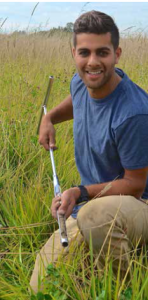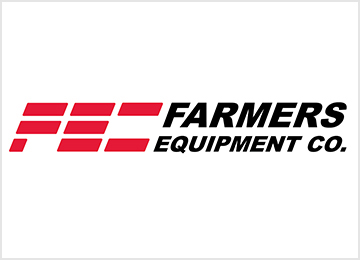Delta Soil Productivity Evaluation
Driving through the Fraser Valley, one can easily spot many high-yield forage fields dotting the landscape. These fields are integral to local food production as dairy farmers depend on them to provide feed for their cattle. The productivity of these fields is not only measured by forage quality (tested for protein and other nutritional properties) but also by the number of cuts that take place in a given year. Three to four cuts of forage per year traditionally indicate that a field is productive.
Curiously, a group of vegetable farmers in the lower Fraser Valley are also well acquainted with seeding grass-legume mixtures on their farm. Most do not own cattle, nor do they typically harvest forages for dairy farmers in the area. These farmers produce vegetables within the municipality of Delta, and integrate a mix of grass and legumes into their rotations for very different productivity reasons.
Delta farmers participate in a unique program offered by local agriculture and wildlife conservation non-profit, The Delta Farmland and Wildlife Trust (DF&WT). This program, called “The Grassland Set-aside Stewardship Program,” assists producers in incorporating set-asides into their vegetable operations. Farmers enrolled in the program seed fields with a grass-legume seed mix developed by local agrologists (soil scientists) specifically for this region, and allow these fields to lay fallow typically for up to four years—or in some cases up to six years. After the four-year period is complete, farmers till the set-aside field, incorporating the biomass into the soil and resume vegetable production.
Benefits of Fallow Fields
Why would a vegetable producer, who farms in one of the most expensive areas in the province, fallow a field for four or more years? The answer lies in soil productivity benefits. “Soil in Delta is some of the most productive in all of Canada,” explains DF&WT Program Coordinator, Christine Terpsma. “Common vegetable rotations in this area include potatoes, peas, beans and corn. These crops grow well; however, local research has shown that growing these crops continuously, year after year, can deplete soil nutrients. Furthermore, continuous cropping and accompanied intensive cultivation may also lead to degradation of soil structure, which in turn leads to poor drainage conditions. Integrating Grassland Set-asides (GLSAs) into rotations enables farmers to build soil organic matter and improve structure. In the meantime, these GLSA fields provide environmental benefits, such as wildlife habitat for migratory birds and small mammals. Participating farmers have the satisfaction of knowing they are not only using a best-management practice for soil conservation, they are also contributing to wildlife conservation.”
The Grassland Set-aside Stewardship Program has been successfully implemented in Delta for over two decades, with much of its research on soil benefits taking place in the mid-1990s to early 2000s. “Initial research provided a locally adapted seed mix, and demonstrated the soil benefits from the first two years of GLSA establishment,” remarks Terpsma. “With participation remaining strong over a twenty year period, it’s evident that farmers perceive a benefit from using the program in today’s economic climate.”
Soil Quality Questions
Farmers, however, pointed to a critical knowledge gap in the program. “Producers want to know how quickly soil benefits accumulate in GLSA fields, and how long they persist after incorporation,” says Terpsma. “With production costs continuing to rise, it is more important than ever for producers to have tools that help maximize the long-term soil productivity of their land.”

To answer enduring soil productivity questions posed by farmers, DF&WT recently launched a full evaluation of the GLSA Program. The five-year research project is conducted in partnership with researchers from the Soil, Water and Sustainability group within the Faculty of Land and Food Systems, the University of British Columbia (UBC), and supported by contributions through the Investment Agriculture Foundation (IAF) of BC.
The evaluation is composed of two complementary studies. The first aims to evaluate the soil quality of Delta fields prior to GLSA seeding (to provide baseline measurements) and examine fields during the four-year program period. A research team, led by UBC Associate Professor Dr. Maja Krzic, has begun analyzing soil samples taken from ten sites before GLSAs were established in the spring. Delta has relatively fine-textured (silty loam to silty clay loam) soils that are prone to compaction, which can be challenging for agricultural production. Hence, the research team is focusing attention and measurements not just on soil organic matter content but also on several soil physical properties including structure, bulk density, porosity and mechanical resistance. All ten sites included in this study have paired GLSA and (adjacent) cropped fields. Measurements are being conducted on both management treatments.
The second part of the evaluation is under the direction of Dr. Sean Smukler, Assistant Professor and Junior Chair of Agriculture and Environment at UBC. Dr. Smukler’s research will quantify the benefits from GLSA management and determine how long they persist after a field is returned to vegetable production.
Comparing GSLA and Non-GSLA Fields
A team from Dr. Smukler’s lab, led by graduate student Khalil Walji, has been busy this summer monitoring the effects of GLSAs that have recently returned to vegetable production. The team has been comparing fields that were in GLSA for the previous four years to paired fields that did not have GLSAs. Soil samples have been collected every other week to assess differences in nutrient availability between former GLSA fields and non-GLSA pairs. The team is now in the process of taking samples of the crop harvest to assess potential differences in yield as a result of GLSA management. Soil samples will also be evaluated for difference in microbial populations—a key indicator of soil health. “The main challenge for us is to tease out differences specifically due to the GLSA from the differences in management practices we see from field to field. In a controlled experimental farm, we would not have these same challenges but then we would not be using ‘real world’ conditions,” says Dr. Smukler. “Collaborating with farmers to do this research on their fields ensures the results are realistic and applicable to their situation.”
The two research projects combined provide a comprehensive look at how enrolling fields in the GLSA Program affects soil productivity over time. “Farmers ask if they can receive the same soil benefits by enrolling their field for three years instead of four,” says Terpsma. “They want to know more about how these set-asides affect their subsequent vegetable yields and their bottom line. The goal of this evaluation is to provide farmers with the answers they need to make informed decisions regarding the management of their soil resources.”
Presently, over twenty fields are being sampled in the lower Fraser Valley for this project, which is one of the largest DF&WT has undertaken since its formation in 1993. “Farmers saw a need for this program and assisted in its implementation in the early 1990s,” continues Terpsma. “It is the only program that establishes short-term, rotational grass-legume mixes on vegetable fields that we know of in Canada. Its value was realized over two decades ago, and with the results of this research, we hope it will continue to assist farmers in stewarding their fields for generations to come.”
Funding for this project is provided in part by Agriculture and Agri-Food Canada through programs delivered by the Investment Agriculture Foundation of BC.












